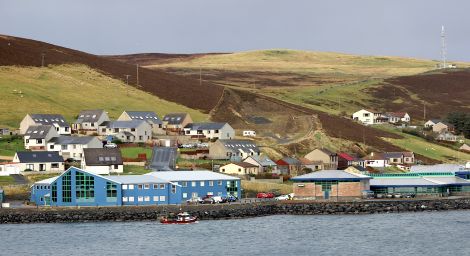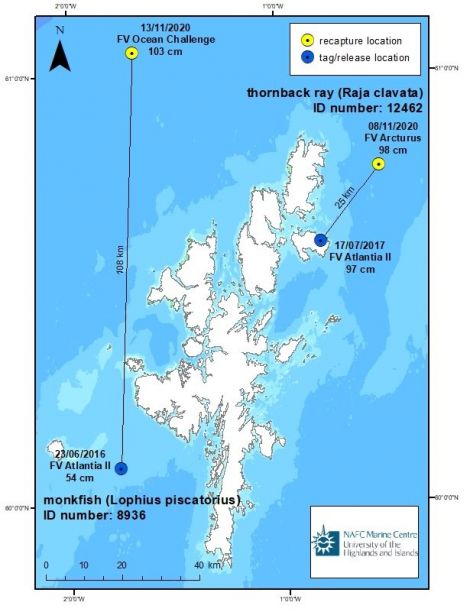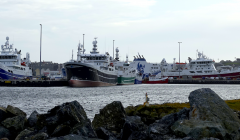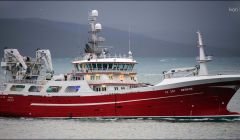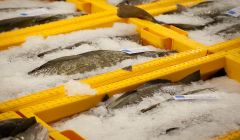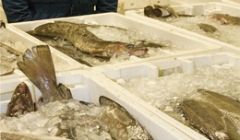Marine / Fishermen asked to take part in herring study
Two fish have also been recaptured years after being tagged
LOCAL fishermen are being asked to collect samples of herring caught around Shetland during the winter as part of a new study.
Staff at the NAFC Marine Centre in Scalloway are keen to determine the identity of the herring caught.
Around Shetland, North Sea autumn-spawning herring are present and support a valuable commercial fishery.
These herring are observed to undergo sexual maturation between March and August, ready to spawn in September.
However, there have also been observations in Shetland waters of other herring which instead undergo maturation in the winter months, to spawn early in the year.
NAFC fisheries scientist Dr Katie Brigden, who is leading the project, said there is little documented information available on ‘winter herring’.
She said the “presence of these fish is of interest to science and industry – raising the question of a stock distribution which is potentially unknown and unaccounted for”.
“There is a need to gather more information to confirm which population these ‘winter herring’ belong to,” Brigden said.
The new project is asking all fishermen in Shetland waters to look out for and retain any herring that are caught between December 2020 and April 2021 so that they can be biologically sampled and genetically identified.
Any herring caught should be kept on ice or frozen, with details recorded of the date and location of capture.
Fishermen are asked to contact the NAFC Marine Centre for the samples to be collected or to arrange drop-off (herring@uhi.ac.uk, 01595 772000).
In addition to collecting samples, fishermen are also being asked to complete a short questionnaire.
Two fish, meanwhile, have been recaptured by local whitefish boats more than three years after they were tagged by the NAFC Marine Centre.
The first fish was a thornback ray (Raja clavata) caught by the Arcturus (LK 59) on 8 November while she was fishing east of Norwick in Unst.
Become a member of Shetland News
The ray had been tagged onboard NAFC’s research vessel Atlantia II in July 2017 and released in the shallow waters near Fetlar, roughly 25km from where the Arcturus recaptured it.
The Marine Centre said this fits with the fact that thornback rays are known to remain inshore during summer and move offshore into deeper waters during winter.
Despite the passage of more than three years the fish had only grown by a single centimetre, from 97cm when it was tagged in 2017 to 98cm in when it was recaptured.
The second was a monkfish (Lophius piscatorius) caught on 13 November by the new Ocean Challenge (LK 253) while fishing north-west of Muckle Flugga.
Coincidently crew member Arthur Johnson who reported this recapture had been the skipper of the Atlantia II when the fish was tagged west of Scalloway in June 2016.
Since it was tagged the monkfish had moved more than 100km to the north, which is consistent with previous NAFC research which found that monkfish move significant distances offshore during the winter.
The fish had also almost doubled in size, from 54cm in 2016 to 103cm in 2020 which fits in with the growth rates of other tagged monkfish.
NAFC fisheries research assistant Connor Wood said tagging gives a greater understanding of the overall growth and movement patterns of commercially important stocks around Shetland.
“It is encouraging that we are still seeing recaptures this long after the tagging project ended but there are likely still many more tagged fish waiting to be caught so we would encourage everyone to continue keeping their eyes open,” he said.
“If you find a tagged fish please keep the whole fish if possible and contact us at nafc.tags@uhi.ac.uk.”
Become a member of Shetland News
Shetland News is asking its readers to consider paying for membership to get additional perks:
- Removal of third-party ads;
- Bookmark posts to read later;
- Exclusive curated weekly newsletter;
- Hide membership messages;
- Comments open for discussion.
If you appreciate what we do and feel strongly about impartial local journalism, then please become a member of Shetland News by either making a single payment, or setting up a monthly, quarterly or yearly subscription.




